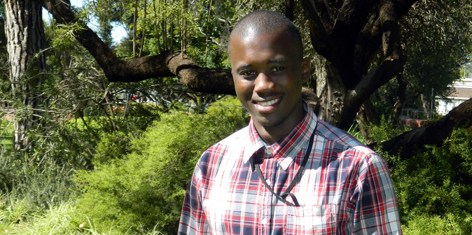
Kovsie student and scientist Karabelo Moloantoa recently represented the Free State in the South African finals of the FameLab competition during the Sci-Fest in Grahamstown.
Karabelo is a 24-year-old student doing his master’s in Biotechnology. He completed his Bachelor’s degree in Medical Microbiology, as well as his Honours degree in Biochemistry at Kovsies. His research is focused on Bioremediation of mine waste waters.
“FameLab is like the scientists Idols taking place annually,” says Karabelo.
“In the competition we are given three minutes to explain a science aspect to a non-science audience. There are 25 countries that participate. South Africa is the only African country participating.”
“I was called by one of my lecturers an hour before the local competition took place at the National Museum in Bloemfontein. I was actually still tired from playing volleyball the night before,” he explains. “I was unprepared and without slides, but I did my presentation.”
This was the first year Karabelo entered FameLab and although he was somewhat unprepared for the local competition in Bloemfontein, he was nominated to represent the Free State in Grahamstown at the Sci-Fest event. From the 18 semifinalists, Karabelo qualified to go the finals where the 9 finalists were competing to represent South Africa in the United Kingdom for the international finals.
“I did not win the UK trip, but I made it to the finals, which is an achievement as half of the semi-finalists could not make it to the finals,” says Karabelo.
“I feel like I have done well to represent the university and the province as a whole. It was amazing to speak in front of more than 800 people, delivering my presentation. I learnt a lot and improved my skills of communicating scientific aspects. I will definitely enter again next year.”